|
Click pictures for a larger version.
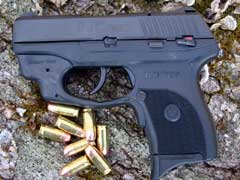


Pistol ships with both flat and extended-style
magazine base plates.



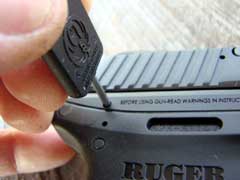
Internal key lock.


Manual safety.


Slide lock (top), magazine release (bottom).




Grip is well-textured and comfortable.


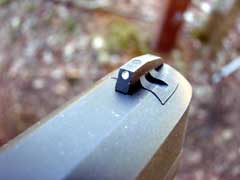
LC380 has real sights, adjustable for windage
correction.


Tactile and visual loaded-chamber indicator.
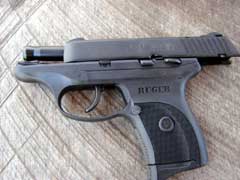
Slide locks open on an empty magazine.
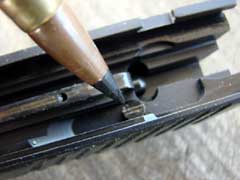
Firing pin safety.



LC380 compared to Jeff's well-worn 380 LCP.

LC380 compared to 9x19mm LC9.



LC380 magazine (left) compared to LC9 magazine
(right).





|
|
The 380 auto pistol is one of the most
popular types of firearm in the United States today. People have
found that the 380 provides a comfortable balance of size,
power, weight, and portability. Most folks, when they first
start carrying a handgun for defense, choose a weapon that is
larger than the one that ends up filling the role of a daily
carry gun. Most folks are just not going to carry a full-sized
fighting pistol on a daily basis, as let’s face it, we really
do not leave the house every day expecting to be the target of a
violent assault. If we really believed that there was a great
probability of being attacked, we would either stay home, or
carry a rifle or shotgun. We carry a handgun as we go about our
daily lives because the handgun is a good compromise. A good
handgun will serve should the rare assault occur, and a good
handgun can always be within reach. If we cannot immediately
access our defensive weapon, it is of no good to us, so we must
carry a gun that can always be there. Therefore, we compromise.
No one makes the argument that the 380 ACP auto pistol is the
most formidable fighting weapon that the world has ever known.
Yet everyday, many people select the 380 pistol as their
defensive pistol of choice; not to head off intentionally into a
fight, but as a weapon to be within reach if a fight comes upon
them. With good modern ammunition, the 380 ACP can serve
adequately; it can be chambered in a lightweight, compact
pistol, and that is why the 380 auto pistol is so popular. I
have access to a few handguns, and I sometimes carry a
lightweight 1911 45, a modern 9mm double-stack auto, or a good
revolver, but even when I am carrying one of those larger
handguns, I usually have a small 380 in my pocket as well. Most
of the time, however, I am armed with only the pocket gun. I
usually only strap on the larger hardware when I am heading into
a city. Around home, I feel pretty confident that the pocket
pistol will get me through the day.
Ruger entered the 380 pocket pistol market
back in 2008 with their dandy little LCP.
The LCP is one of the smallest and lightest 380 pistols on the
market, and Ruger has produced and sold many, many thousands of
them to satisfied customers. The LCP is a pistol that is small
enough and light enough to always be within reach, and those
traits have endeared the little jewel to thousands of folks who
choose to carry a gun on a daily basis. Late in 2010, Ruger
introduced the LC9, which was Ruger’s
answer to those who wanted a handgun that was similar to the
LCP, but chambered for the more-powerful 9x19mm cartridge. The
LC9 is also a dandy pistol, but some find that the recoil from a
nine when fired from a seventeen-ounce pistol to be more than
they care to handle. Likewise, the recoil from a ten ounce 380
when loaded with premium ammunition is more than many desire, so
Ruger has now combined the size, weight, and feel of the LC9
with the milder 380 ACP cartridge, giving shooters a good 380 in
a “just the right size” package.
The LC380 has all the features of the LC9,
but is easier to operate and to shoot for many people. The slide
is easier to operate than is the slide of either the smaller LCP
or the LC9, as the recoil spring is of a lighter weight than the
LC9, and the slide gives a larger grasping area than does the
LCP. The felt recoil of the LC380 is also less than the felt
recoil of either the LCP or the LC9, making it easier for many
shooters to control. Pistols such as the Bersa
Thunder 380 are so popular because they are larger than the
later generation of 380 pocket pistols, making the Bersa easier
to shoot accurately. The Ruger LC380 fills the void between the
smallest 380 pistols like the LCP and the larger 380 pistols
like the Bersa, resulting in a 380 that is easy to operate and
easy to shoot accurately, while still being small enough and
light enough to serve as an everyday carry gun.
The LC380 is also loaded with safety
features, some of which allow it to be sold in areas where the
LCP cannot be sold. The LC380 has a tactile and visual
loaded-chamber indicator atop the slide. The magazine disconnect
safety prevents the pistol from being fired with the magazine
removed. There is an internal key lock, for those who choose to
use it. On the left side of the fame is a manual thumb safety
that pushes downward to fire. Also, there is an internal
automatic firing pin safety that blocks the firing pin from
movement unless the trigger is in its rearward position. This
LC380 is as safe as any mechanical device can be, and it will
not fire unless the trigger is pulled.
Critical specifications for the LC380, along
with a comparison to the LCP, are listed in the chart below.
Physical dimensions and weight of the LC380 are identical to the
LC9. Weights are listed in ounces. Linear dimensions are listed
in inches. Trigger pull is listed in pounds of resistance, as
measured with my Lyman digital trigger pull scale. Height
includes sights and standard magazine base pad. Maximum width is
measured across the top of the frame, and includes the manual
safety lever on the LC380.
| |
LCP
|
LC380
|
| Chambering |
380 ACP |
380 ACP |
| Weight with Empty Magazine |
9.41 oz. |
17.2 oz. |
| Trigger Pull |
5 lbs., 10 oz. |
6 lbs., 7 oz. |
| Barrel Length |
2.75" |
3.14" |
| Barrel Diameter |
0.426" |
0.5" |
| Overall Height |
3.6" |
4.44" |
| Overall Length |
5.16" |
5.94" |
| Grip Width |
0.78" |
0.968" |
| Slide Width |
0.74" |
0.882" |
| Maximum Width |
0.895" |
1.04" |
| Trigger Reach |
2.51" |
2.81" |
| Magazine Capacity |
6 |
7 |
| Magazines Supplied |
1 |
1 |
| Sights |
Black, Fixed |
3-Dot, Windage
Adjustable |
| Accessory Rail |
No |
no |
I fired the LC380 with every
brand and type of 380 auto ammunition available to me to check
for reliable function. I fired a variety of ammunition over the
chronograph to check velocities, with the results listed in the
chart below. LCP velocities are listed for comparison.
Velocities are listed in feet-per-second. Bullet weights are
listed in grains. JHP is a jacketed hollowpoint bullet. DPX is a
hollow nose homogenous copper bullet. FMJ is a full metal jacket
roundnose bullet. FP is a full metal jacket flat-nose bullet. PB
is Cor-Bon Pow’RBall. HC is a
hard-cast flat-nose lead bullet. Velocities were taken at an
elevation of 541 feet above sea level, ten feet from the muzzle,
with an air temperature around the fifty-two degree Fahrenheit
mark, with fifty-six percent humidity.
| Ammunition |
Bullet Weight |
Velocity LCP |
Velocity LC380 |
| Cor-Bon JHP |
90 |
943 |
1015 |
| Cor-Bon PB |
70 |
1215 |
1288 |
| Cor-Bon DPX |
80 |
927 |
930 |
| Handload JHP |
88 |
820 |
843 |
| Buffalo Bore JHP |
90 |
1030 |
1052 |
| Buffalo Bore FMJ |
95 |
967 |
989 |
| Buffalo Bore HC |
100 |
1076 |
1127 |
| Remington JHP |
88 |
819 |
831 |
| Stryker FP |
95 |
880 |
895 |
| Atomic JHP |
90 |
928 |
907 |
With every brand and type of ammo tested, the
LC380 functioned flawlessly. Every round fed, fired, and ejected
perfectly. Fired cases ejected to the right of the shooter, with
none hitting the shooter. The sights proved to be pretty close
to point of impact with most loads tested, so no adjustment was
made to the sight setting. With most loads fired, a measurable
velocity increase was noted above the velocities listed for the
shorter-barreled LCP. I did not attempt to test for target
accuracy from the LC380, as this is a defensive pistol, so all
shooting was done hand-held, standing, shooting at targets from
five to twenty-five yards. The LC380 has real pistol sights, of
the three-dot variety, and proved capable of keeping all shots
well within the kill zone on a standard silhouette target at
twenty-five yards.
As with any handgun that I carry for defense,
I wanted to mount a Crimson Trace laser, and the Laserguard that
is made for the LC9 fits the LC380 perfectly. Most
distasteful social situations happen at night, and in
poorly-lighted areas. For such situations, I find a good
laser to be as necessary as the weapon itself. Hitting the
target quickly and accurately makes the difference between
winning and losing a gunfight, and the Crimson Trace laser gives
me the ability to place the shot in low-light conditions, while
adding less than one ounce to the weight of the LC380.
Attaching the laser does change the profile
of the pistol, which is of no consequence if carrying the pistol
in a pocket without a holster, but while the LC380 is compact,
it will not fit every pocket, so a holster that is made to
accommodate the pistol with the laser attached is necessary. For
that, I obtained a hybrid leather/Kydex holster from SHTF Gear.
This holster is very comfortable, and keeps the LC380 secure
until needed. It also protects the pistol from sweat, and
protects the wearer’s skin from abrasion. The SHTF holster can
be worn inside the pants, or outside, by changing position of
the clips. Also, leather belt loops are available, if those are
preferred over the spring clips. The clips are adjustable up and
down, to adjust the depth to which the pistol rides inside the
pants, or to adjust the angle of the carry.
With the LC380, Ruger has made a 380 auto
pistol that is very user-friendly. Sometimes, those of us who
shoot every day, firing many different types of weapons, tend to
forget that most gun owners are not avid shooters. Their carry
gun might be their only gun, and they often have very little
experience before buying the weapon. The LC380 has handling
qualities that make it easy to use for those with very little
experience. It is easier for a novice to shoot well than is the
smaller LCP. It is also easier to shoot well than is a pistol
that has more recoil. With the LC380, Ruger has achieved a good
balance of size-to-power. The pistol is easy to conceal, but
also easy to shoot, and is an excellent choice for someone who
wants a 380 for defense, but does not necessarily need the
smallest 380 available. With the LC380, Ruger got it just right.
Like all Ruger firearms, the LC380 is made in the USA. As of the
date of this review, the suggested retail price of the LC380 is
$449 US, but prices do change, and vary from dealer-to-dealer.
Check out the extensive line of Ruger
firearms and accessories online at www.ruger.com.
For the location of a Ruger dealer near you,
click on the DEALER FINDER at www.lipseys.com.
To order the LC380 online, go to www.galleryofguns.com.
To order a quality SHTF Gear holster, go to www.shtfgear.com.
To order a Crimson Trace laser online, go to www.crimsontrace.com.
To order quality 380 ACP ammunition, go to www.buffalobore.com,
www.midsouthshooters.com,
and www.luckygunner.com.
Jeff Quinn
  
Got something to say about this article?
Want to agree (or disagree) with it? Click the following link to
go to the GUNBlast Feedback Page.
|
|
Click pictures for a larger version.

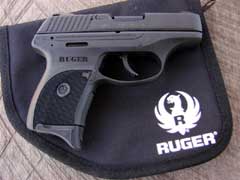

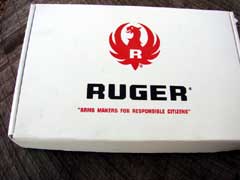


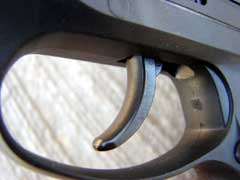
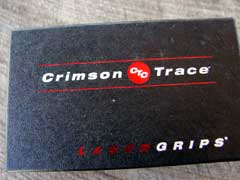








Crimson Trace Laserguard for the LC9 fits perfectly
on the new LC380.






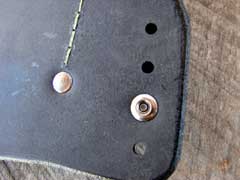



SHTF Gear hybrid holster.












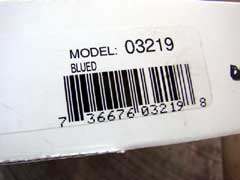

|
![]()